This post may contain affiliate links. Please read our disclosure policy.
This blog post covers not only how to grow Wheatgrass at home with and without soil (which is ridiculously simple to do!), but also some suggested uses for this superfood!
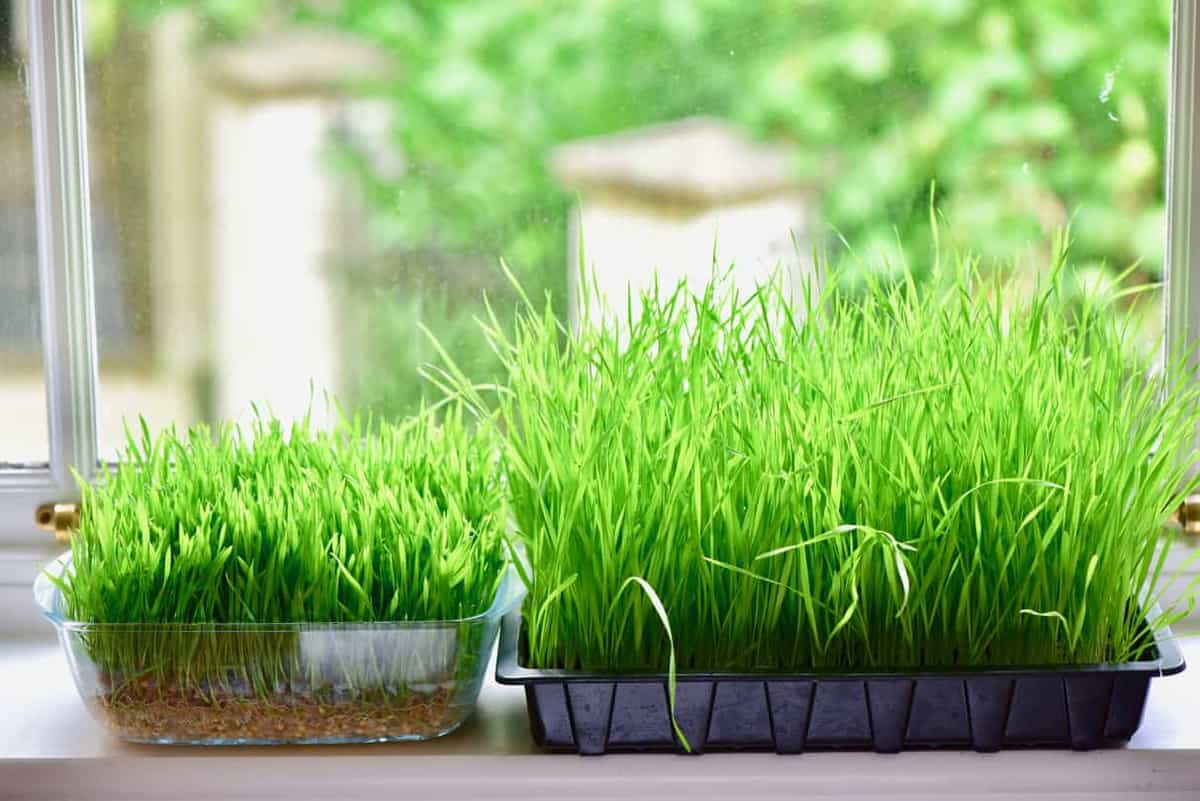
My introduction to Wheatgrass was seeing it on a TV show growing up as the go-to for a morning ‘shot of health’. But in terms of money, a daily shot of Wheatgrass bought from your local juice shop is sure to add up. Now, this post will show you how to grow Wheatgrass at home to save your pennies.
Want to save this recipe?
What is Wheatgrass?
Starting off with something super simple. What is Wheatgrass? It is the first grass of wheat grains, harvested before it reaches full size (usually 7-10 days after sprouting).
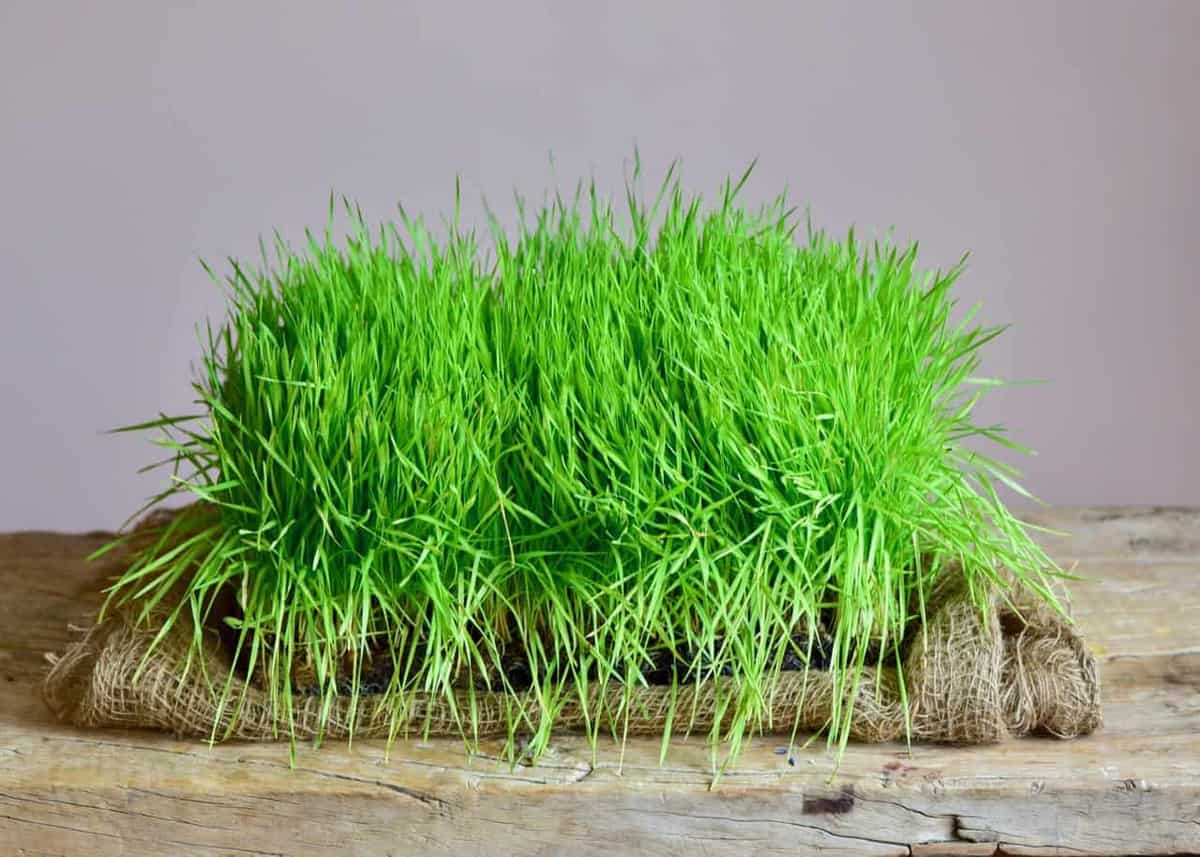
How to use Wheatgrass
While Wheatgrass can be bought as a powder or supplement, I will be focusing on uses from homegrown Wheatgrass. Specifically, the most obvious being for your own wheatgrass shots (blog post coming soon!) However, Wheatgrass can also be used to supercharge other juices, smoothies, various other beverages, as well as salad dressings etc.
Super Tip: It’s worth noting that if you’re only implementing Wheatgrass into your diet now; Wheatgrass can slightly upset your tummy if your body isn’t used to its powerful detoxification. To combat this, you can begin by incorporating a 1/2 shot (30ml) into your diet to start with and adjusting the amount over time. (Otherwise, you may experience side effects such as a headache, nausea and fatigue).
Surprisingly, fresh wheatgrass juice isn’t just used for ingesting. You can also include wheatgrass juice in your bath to soothe your skin, reduce scarring and acne as well as cleanse the skin. I have even heard of people using it to massage into the scalp (then rinse) to reduce dandruff. As well as applied topically to soothe bites and scratches and soften hands and skin.
I haven’t had the chance to use it for any non-food related reasons as of yet. If you have, please let me know what for and if it worked, in the comments below!
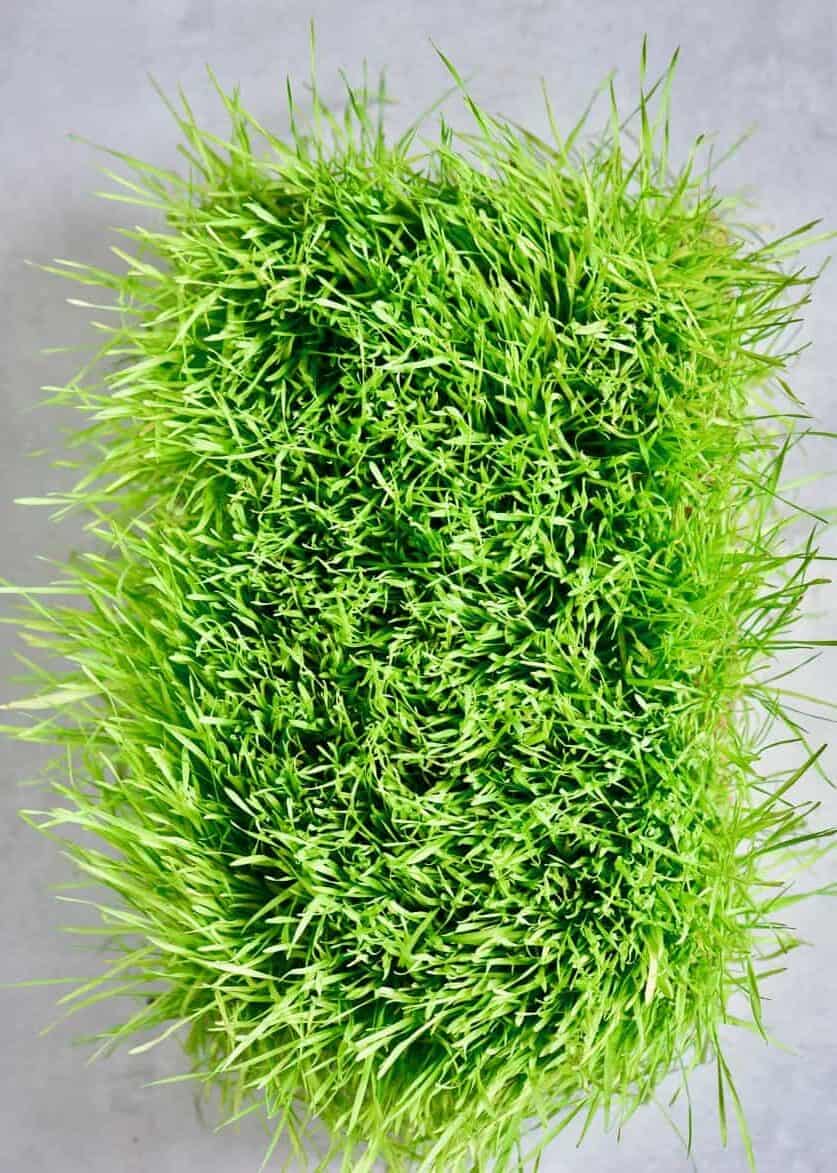
How to Grow Wheatgrass at home
Hopefully, I’ve officially convinced you to add this powerhouse to your diet. With that in mind, let’s get into the details of how to grow Wheatgrass at home, with and without soil.
It’s also worth noting. Once you’ve cut the Wheatgrass, you can allow it to grow a second time for more wheatgrass juice. However, after that, I would suggest growing a new batch.
What’s needed
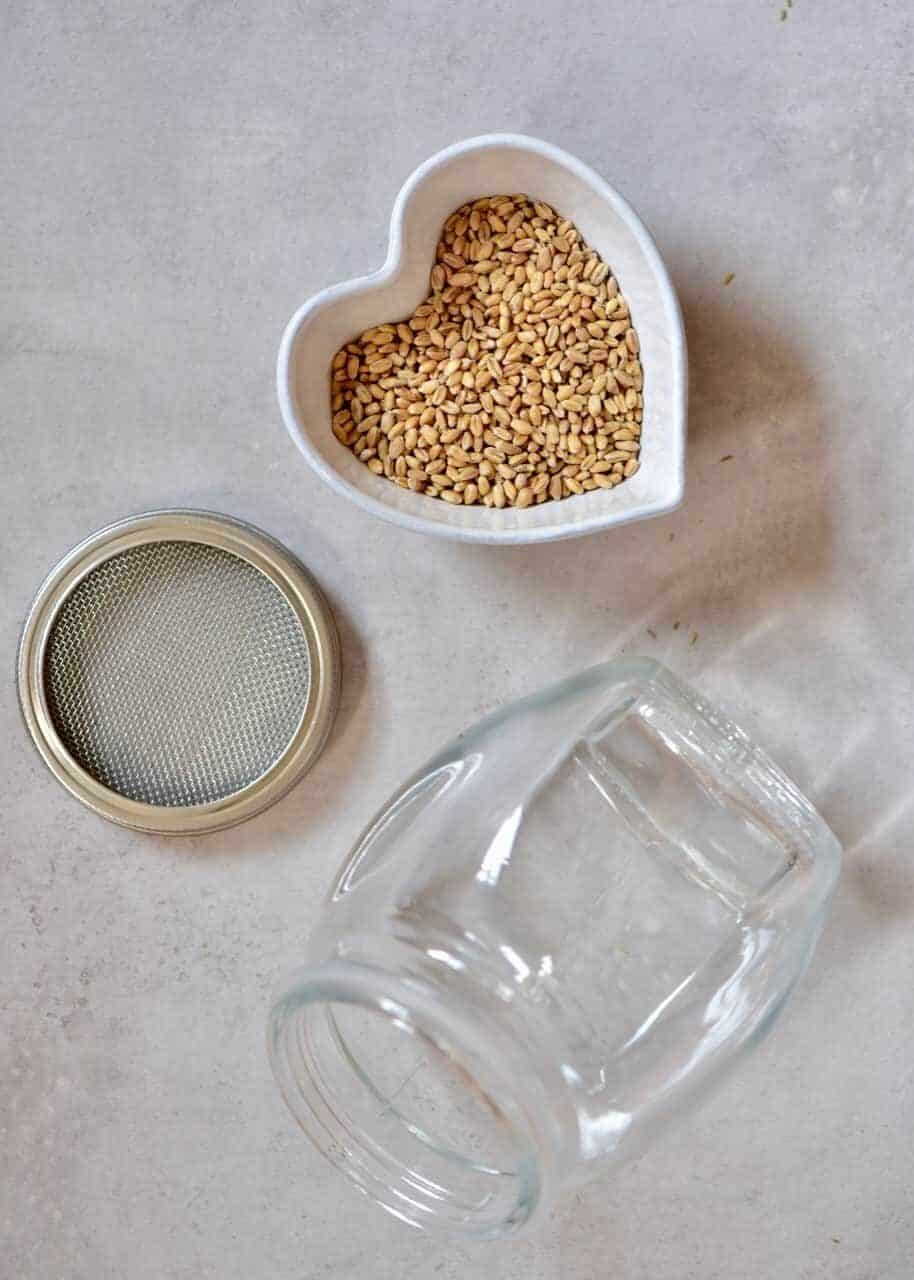
- Organic wheatgrass seeds
- water
- Sprouting container/glass jar
- Tray
- Soil (if using the Method with soil)
First – sprout the seeds
These first steps are used for both the soil & soilless version.
Rinse the seeds then put in a sprouting container and cover with a mesh. Add 1 cup of water and soak for 8 hours.
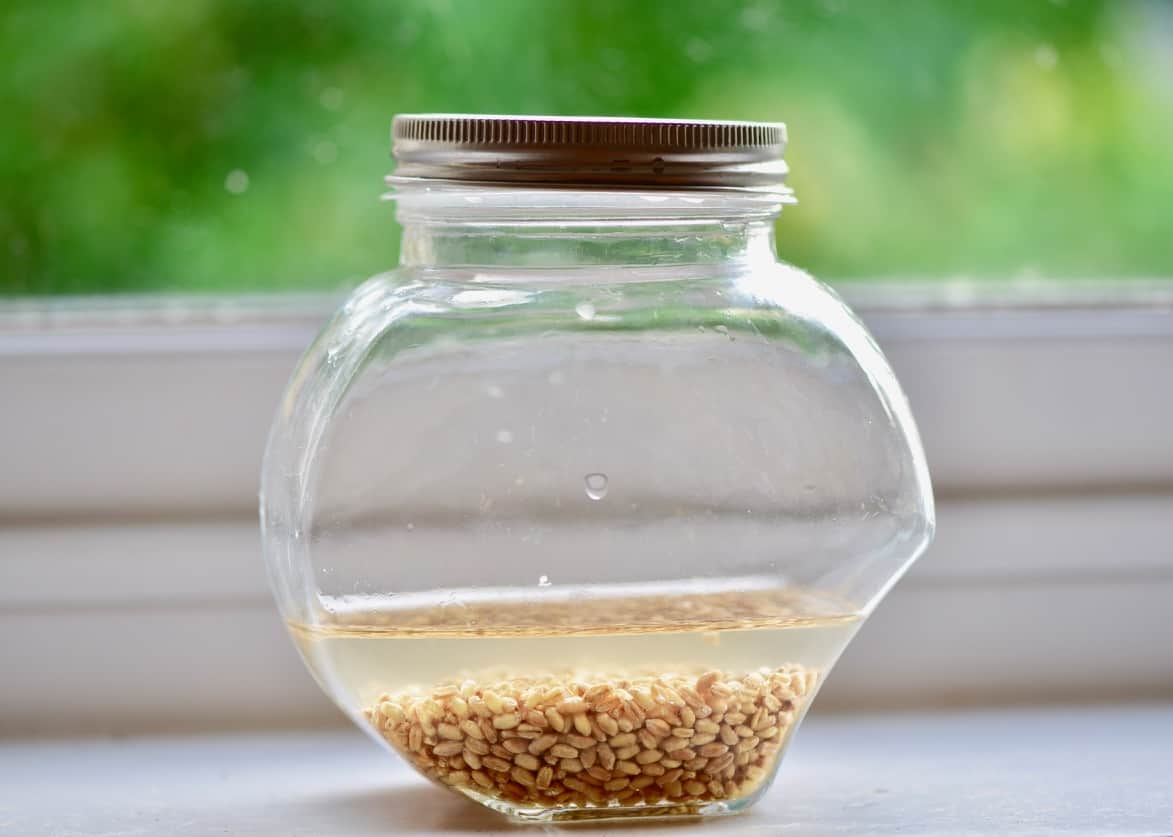
Drain and rinse well.
Fill the container with water, invert it and let the water drain through the mesh. Leave it upside down.
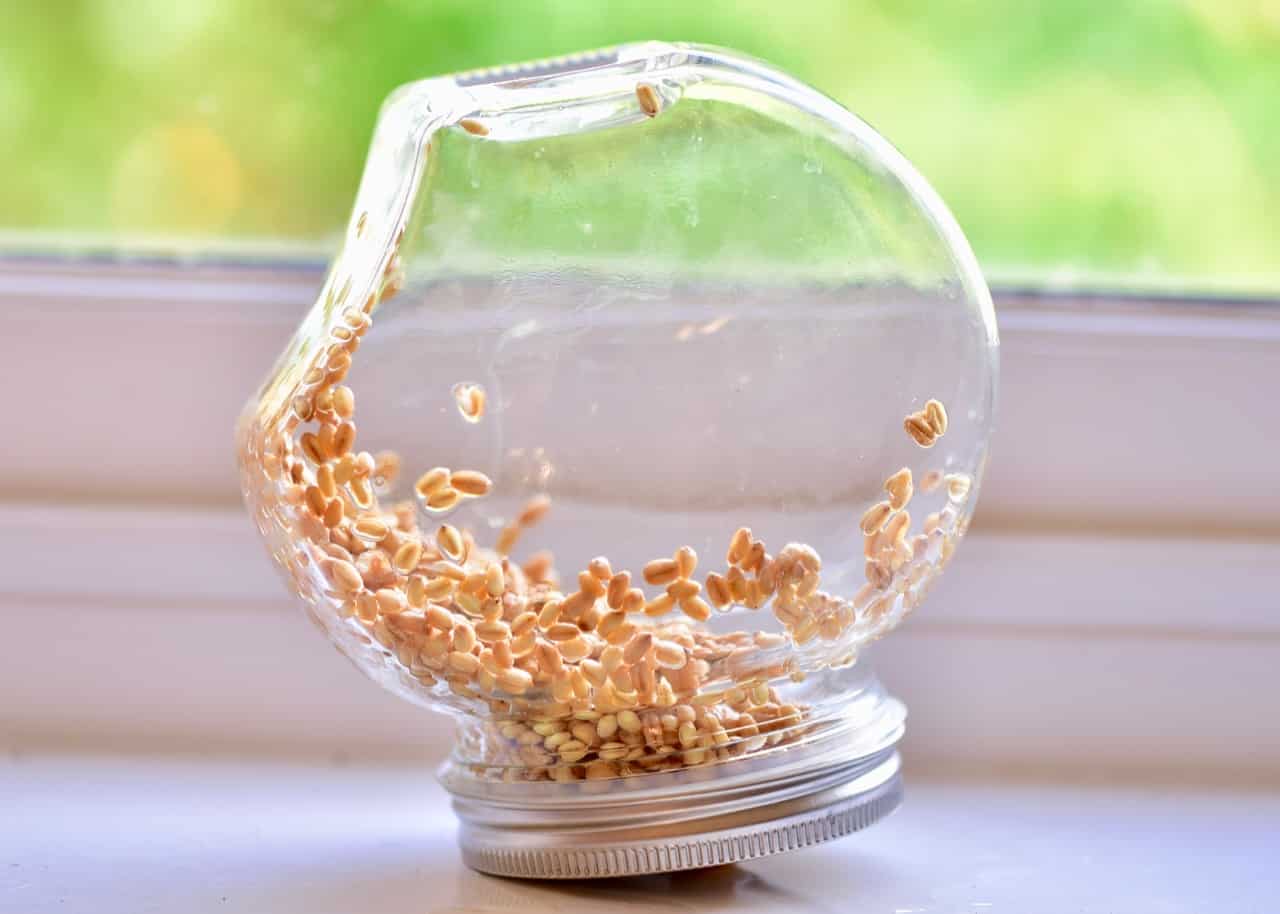
Rinse the seeds 2-3 times a day for 2-3 days. Tiny sprouts form within 2-3 days.
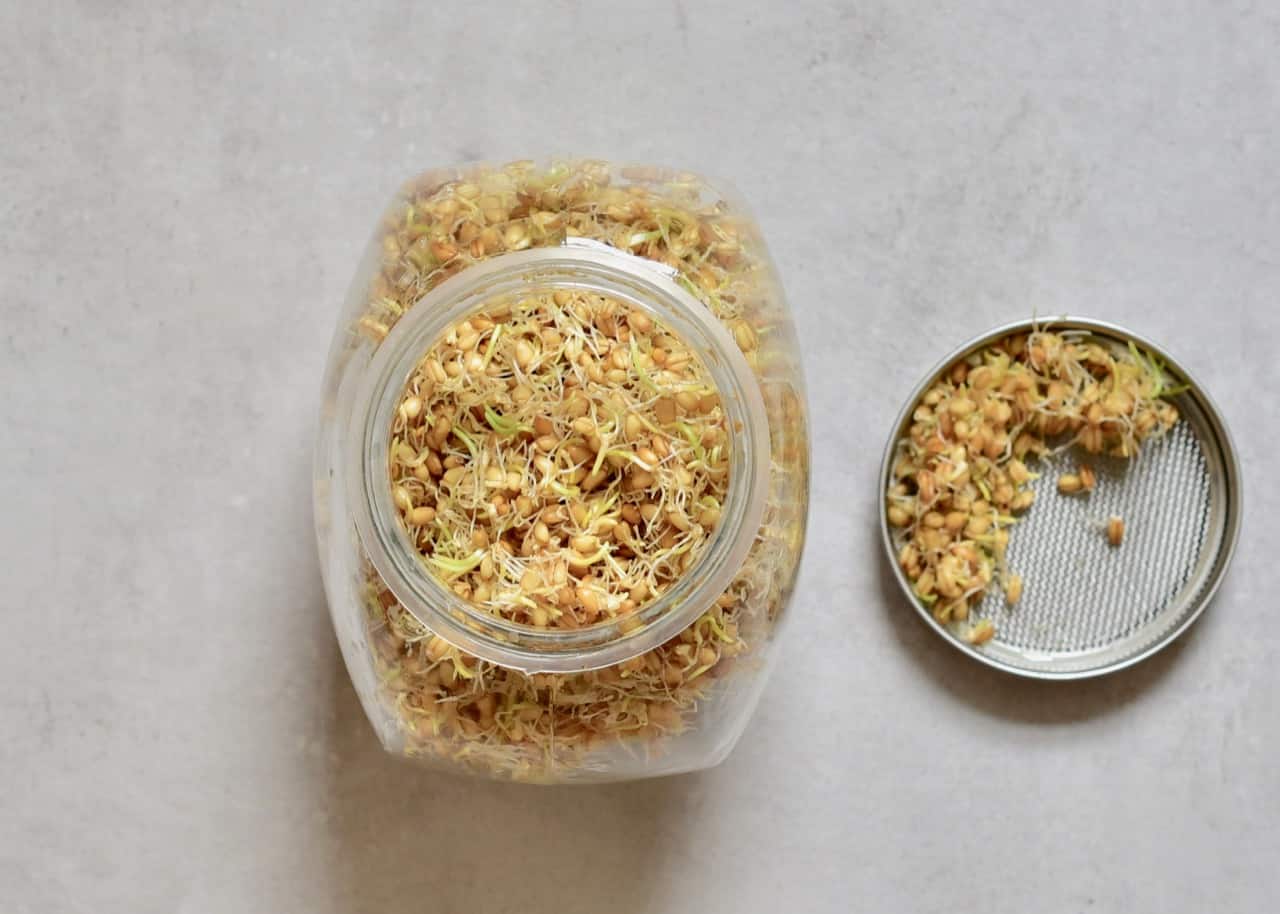
How To grow Wheatgrass with soil
When the sprouts appear, it’s time to plant. Add 1 inch (2.5 cm) organic compost/ planting soil to a tray (with holes at the bottom) and water it. Sprinkle the seeds across the soil.
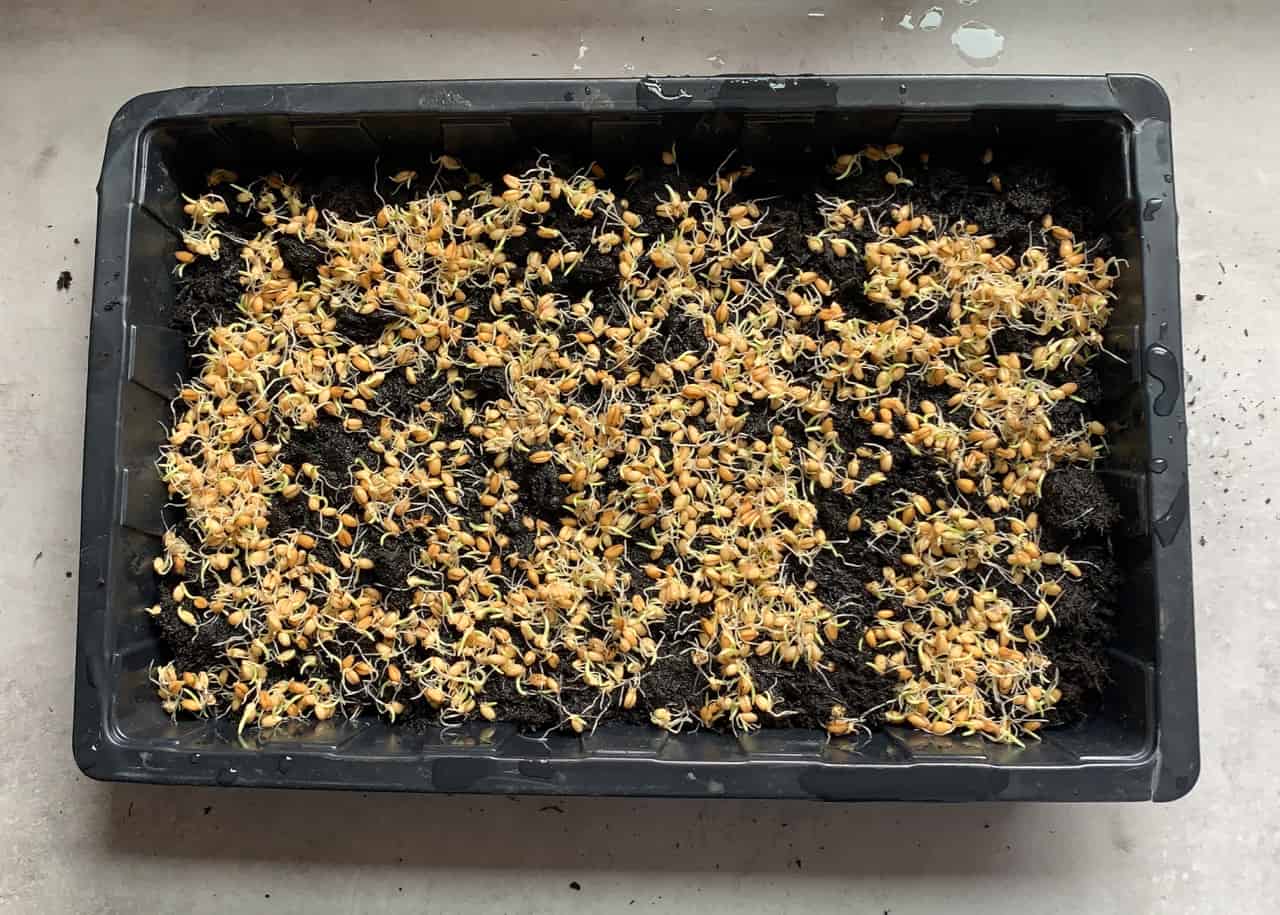
Cover the tray with a lid or a newspaper. The darkness will help it grow. Spray it with water daily.

Remove the lid/newspaper when the grass reaches about 1-2 inches (2.5-5 cm) and continue to water daily.
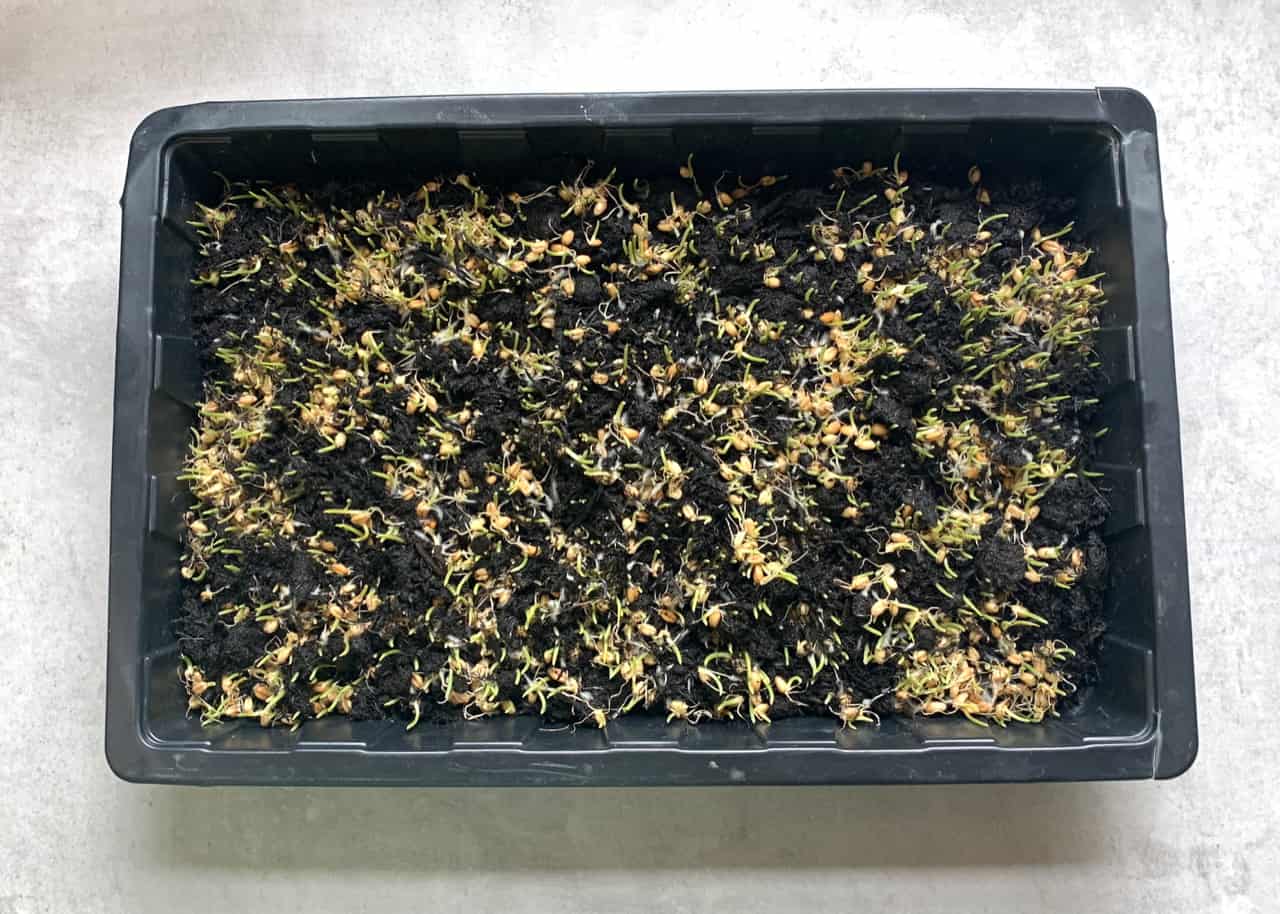
You can harvest when the grass reaches about 5 inches (12 cm). Simply cut the grass close to the root.


How to Grow Wheatgrass Without Soil
Growing wheatgrass without soil is the cheaper, prettier option. However, without the nutrients given to the plant by a good quality organic compost, the plant itself will also grow to have fewer nutrients. It is also more hands-on, in terms of the growth process.
That’s not to say that it’s pointless to use this method for juicing. However, it’s just something worth noting if you want to take advantage of the maximum amount of nutrients that you can.
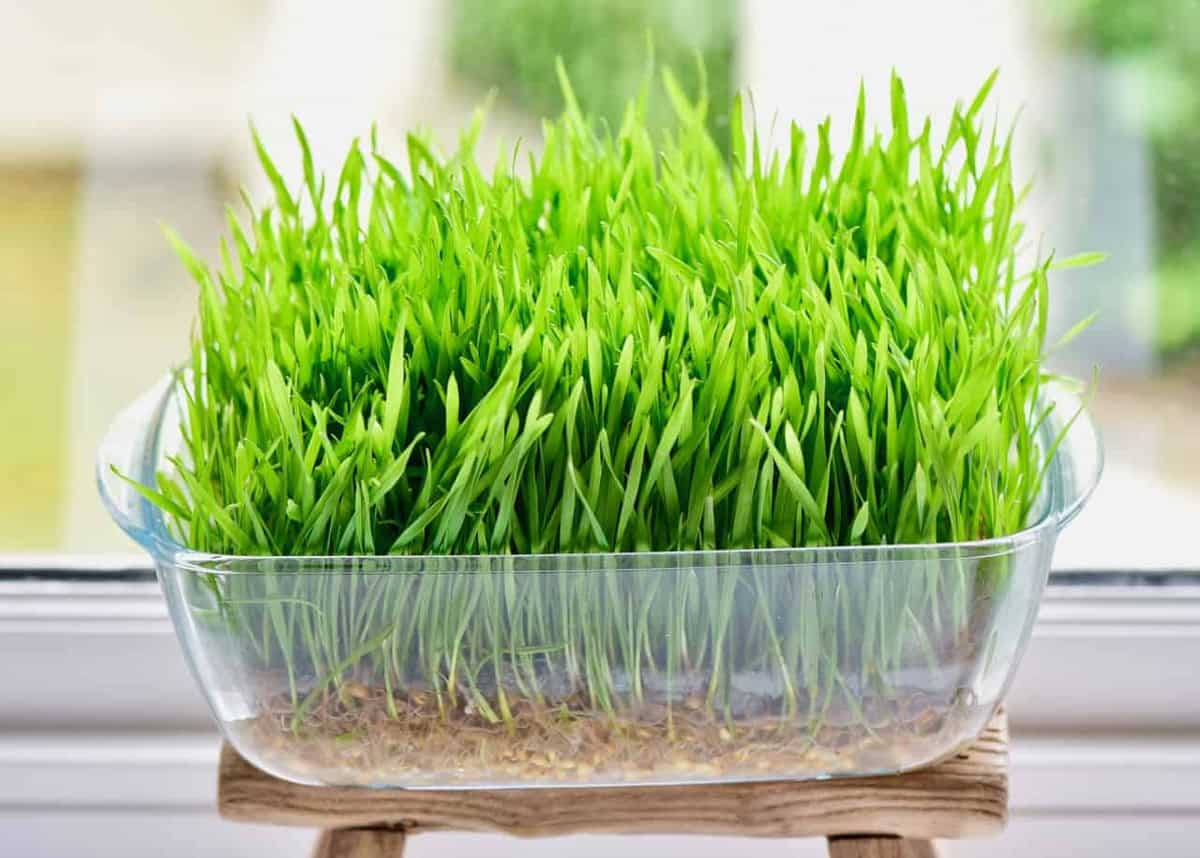
Growing Wheatgrass without soil is fairly similar to the first method. First you need to use the exact same method for sprouting the wheat.
This point is now where the method differs. For soilless wheatgrass, you then spread out your seeds across the bottom of the container and cover with water.
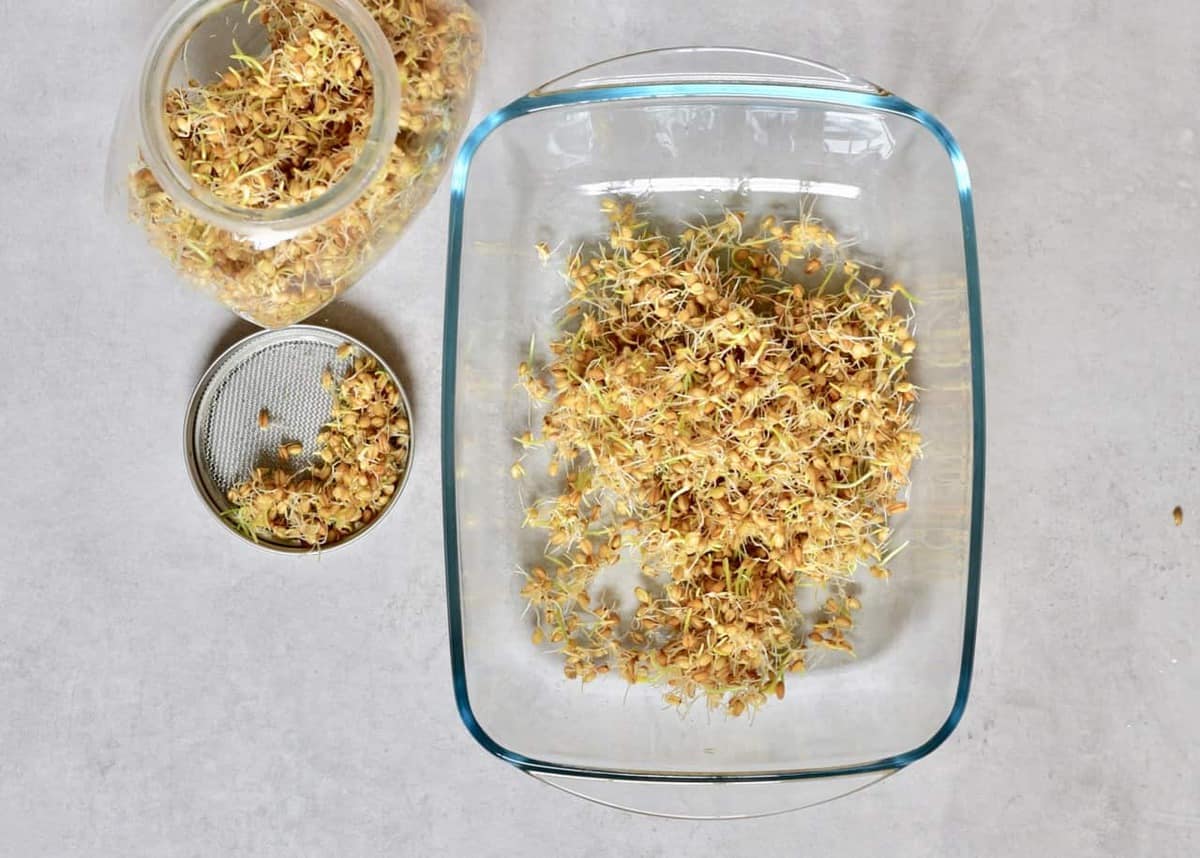
I then covered the container with a cloth for the first night to create a warmer, darker area for them to grow.
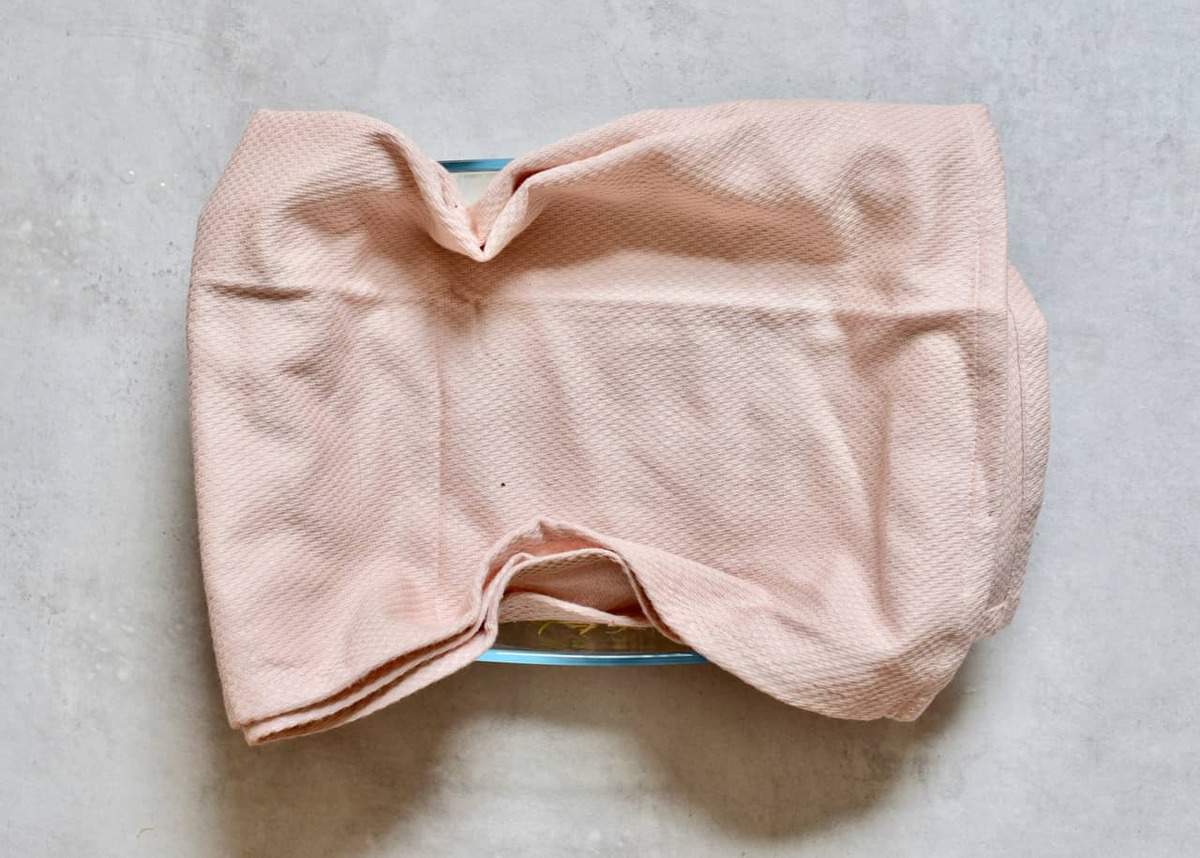
You then simply repeat the process of rinsing and draining the seeds a couple of times a day (this is an important step to help you avoid mould!!).
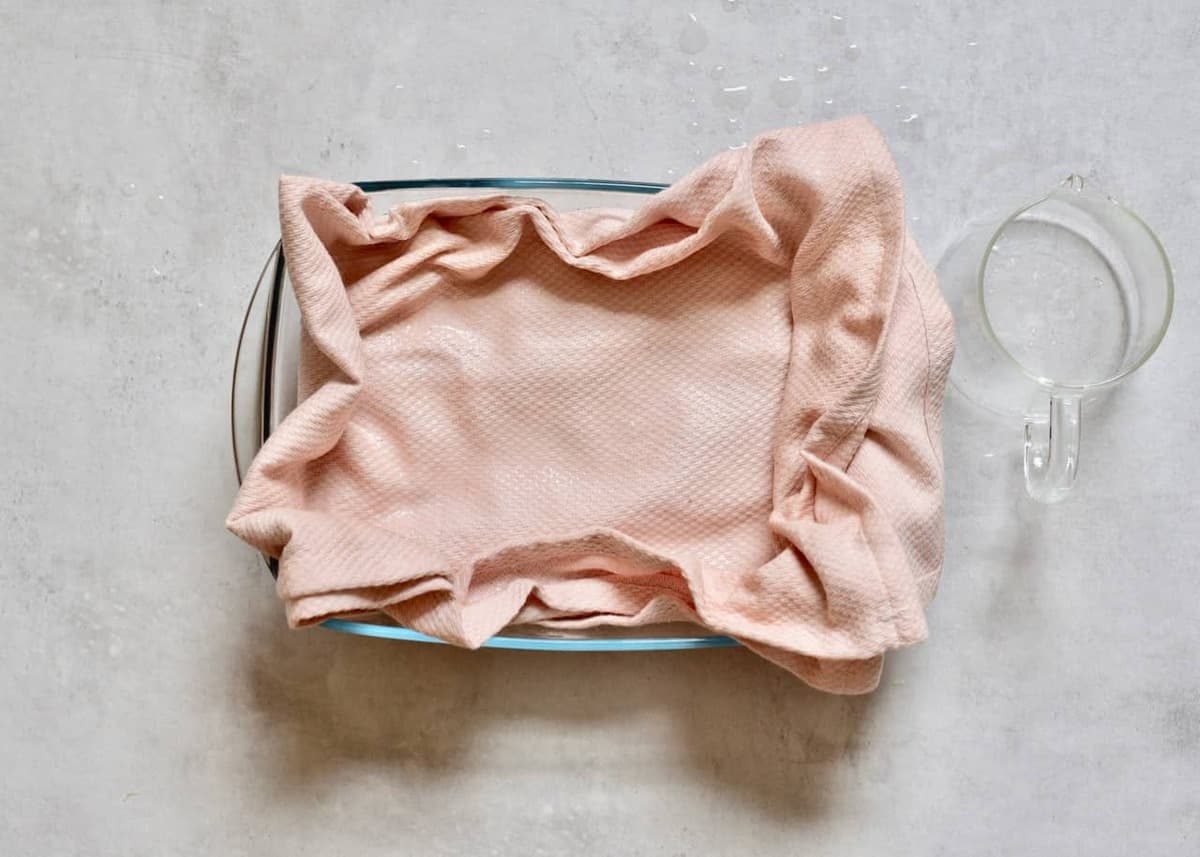
Within a few days the shoots will have started to grow. By day 8/9, they are ready to harvest.
Tip* Keep the container well ventilated to avoid the growth of mould and remember to rinse and drain the seeds a couple of times a day too.
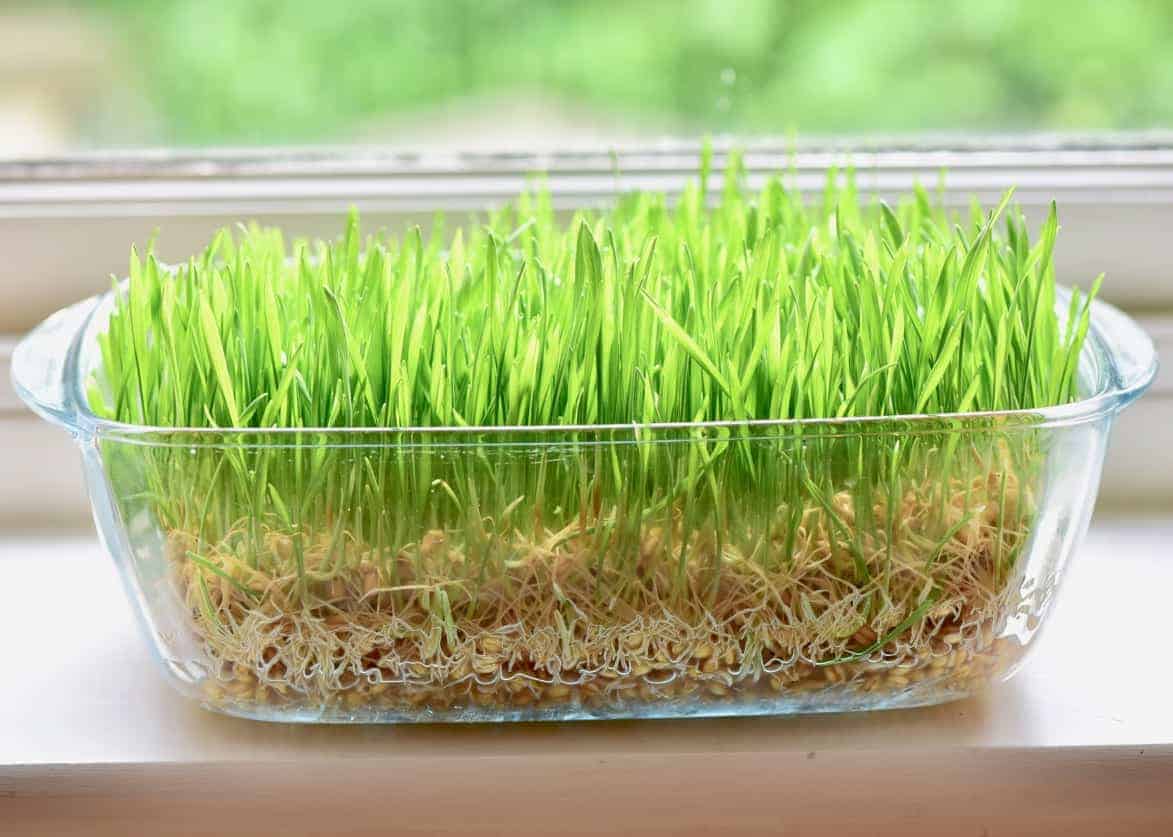
Tip: I have heard of another way, by layering wet kitchen towel on the bottom of your dish , then your seeds and a piece of clingfilm on top. This creates a ‘greenhouse’ like effect for the first few days, while they begin to grow. I haven’t tested this method though and not sure if it would increase the risk of mould. If anyone has had success with this method, please let me know in the comments below.
What next?
You can then use the freshly harvested wheatgrass to juice immediately and consume. The fresh juice can also be kept in the fridge for up to a week (although, it will lose nutritional value over time!). Alternatively, you can freeze portions of 3tBsp juice in a large ice-cube tray.
I go into details as well as explain how to make your own wheatgrass juice in this blog post – How to make Wheatgrass Shots and Juice.
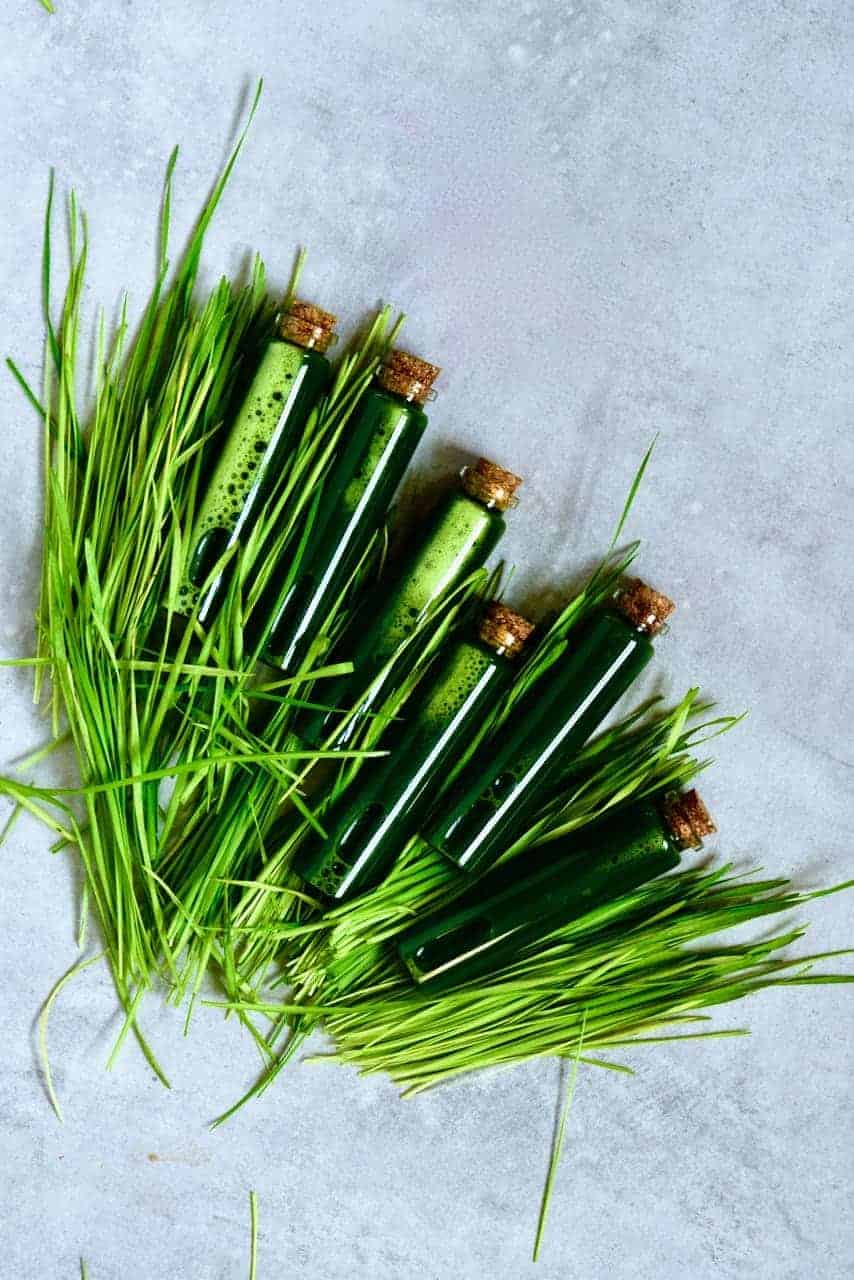
Note: Wheatgrass is susceptible to mould when you’re growing it at home, so take notice of any changes. If there are any signs of spoilage or the juice is suddenly more bitter, then have caution and don’t drink it! (the wheatgrass roots are ‘feathery’, so don’t mistake this for mould).
Plus, if you’re looking for any other DIY inspiration then I have lots to choose from. From How to make Coconut Butter, to Homemade Oat Milk (that isn’t slimy) or even DIY Homemade Vegan Nutella. In fact, I have quite a few homemade milks, cheeses, baking ingredients and more.
If you give this DIY a go then please let me know in the comments below! Also, I love to see your creations so feel free to tag me @AlphaFoodie.
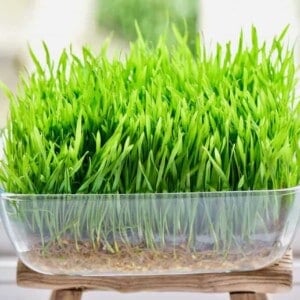
How To Grow Wheatgrass At Home (With & Without Soil)
Equipment
- sprouting jar or regular glass jar
- Baking tray
Ingredients
- 1-3 tBsp organic wheatgrass seeds
- water
- soil
Instructions
Sprouting the seeds
- Rinse the seeds then put in a sprouting container and cover with a mesh. Add 1 cup of water and soak for 8 hours.

- Drain and rinse well. Then fill the container with water, invert it and let the water drain through the mesh. Leave it upside down.

- Rinse the seeds 2-3 times a day for 2-3 days. Tiny sprouts form within 2-3 days.Next – choose one of the methods below.

Method 1 – Using soil
- Add 1 inch (2.5 cm) organic compost/planting soil to a tray (with holes at the bottom) and water it. Sprinkle the sprouted seeds across the soil.

- Cover the tray with a lid or a newspaper. The darkness will help it grow. Spray it with water daily.

- Remove the lid/newspaper when the grass reaches about 1-2 inches (2.5-5 cm) and continue to water daily.

- You can harvest when the grass reaches about 5 inches (12 cm). Simply cut the grass close to the root.

Method 2 – No soil*
- Spread out the spouted seeds across the bottom of the container and cover with water.

- Cover the container with a cloth for the first night to create a warmer, darker area for them to grow.

- Repeat the process of rinsing and draining the seeds a couple of times a day (this is an important step to help you avoid mould!!). Within a few days the shoots will have started to grow.

- By day 8/9, they are ready to harvest.

Video
Notes



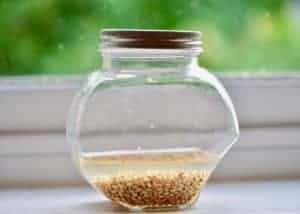
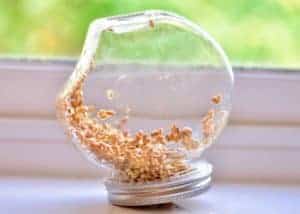
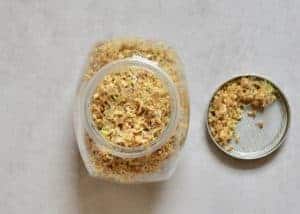
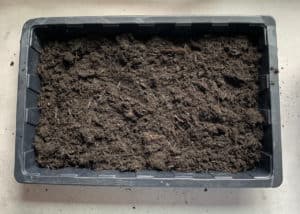

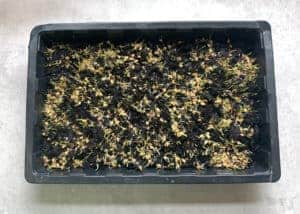
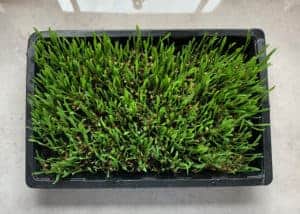
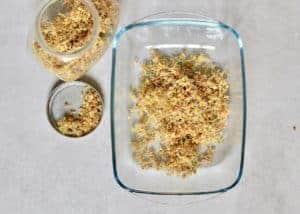
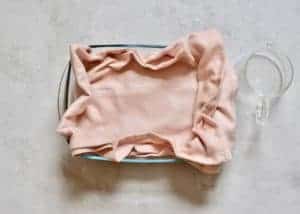
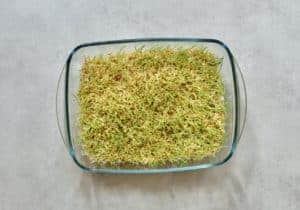
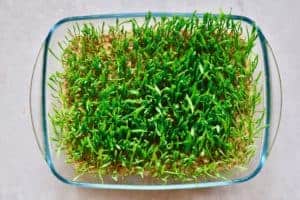









Very good, comprehensive article about how to sprout from seed, then germinate wheatgrass to be harvested when it’s inches tall.
Thank you so much for your comment, Maureen.
Thank you for such an amazing content. I do follow u almost everywhere due to your amazing diys and recipes.
Love from india
Bidhisha
You’re so kind Bidhisha, thank you ever so much for all your support and for being here, lots of love your way,
What is the effect of wheat grass to a pregnant woman? does the benefit surpass the side effects. kindly reply
Hi Linda,
It’s best to consult with your doctor whether you can consume wheatgrass while pregnant and/or breast-feeding.
Wheatgrass has amazing health benefits for you and baby! I would recommend reading up on it! I’m currently pregnant and I’m hoping to drink an oz a day off I can.
Thanks for sharing your experience, Kaylee.
Where do u get your seeds from ?
Hi Steph,
I usually get the seeds online. They also sell them in some health stores. I hope this helps.
Hi love your message, on the subject about purchasing seed I was looking at maybe buying seed at a stock feed produce outlets, much cheaper and on the matter of feeding the plant liquid fertilizer has anyone tried sting nettle fertilizer it is basically chlorophyll and would make a great feed for a seed
Thank you for your comment, William. I haven’t used sting nettle fertilizer.
Good Information For Wheatgrass
Thank you for your comment.
I will be growing the grass indoors, in winter with little sunlight. Will I need a UV grow light for my grass to grow?
Hi Janice,
I’ve grown mine indoors as well, on the windowsill, in the winter – that was not a problem at all. I don’t think you need a UV light as long as there is daylight where you place the wheatgrass. I hope this helps.
Hi, and thank you so much for this.
I went with the soil option for more nutrients, and I’m on day 6. So far, so good!
Your instructions (with soil) say to spray with water daily once the seeds are on the soil. *How many times a day? How lightly or heavily am I to spray?
Also, when the lid comes off, after an inch to two of height, it then says to water daily. *Water? Or spray? How much? How often?
Thanks so much; I NEED this wheatgrass!
Hi Bo, I would spray once or twice (if it’s drying out quickly). Is the place you’re growing them too warm? you want them hydrated but not too much if that makes sense? like if you have so much water on them it might promote the growth of mould so go easy (not too dry and not too wet) just in the middle. Let me know how it goes, if you want to send me some photos by instagram (alphafoodie) I can have a look at them and give you further tips if needed :)).
Hi,
Is wheat grass and wheat sprouts are the same thing? Does both of them has same nutritional benefits?
Thanks
Hi Aamir,
When you grow wheatgrass from seeds, it first becomes wheat sprouts, then, as you allow them to grow, they become wheatgrass. Sprouted wheat seeds can be consumed whole by adding to salads, soups, etc. Wheatgrass is usually juiced and consumed as shots or added to other drinks (fruit juices or smoothies). Both wheatgrass and wheat sprouts have great nutritional values. I hope this helps.
Hi Samira,
I want to know whether we can dry the wheat grass and grind them into powder with ROOTS. Is it safe with roots?
Hi Sunitha,
Yes, it’s safe to keep the roots on and dry and grind all into powder.
after you cut it does it continue to grow or is that it from that lots of seeds?
It will continue to grow. I usually harvest mine 2-3 times before starting from scratch 🙂
Hello – i am trying to grow wheatgrass at home and seem to be experiencing lots of mould inside.
If I try the method without soil – you suggest rinsing twice a day, how do you do that when they are growing? just water then let the water drain?
Thanks for any suggestions
Hi Lisa,
You can use a mesh or a kitchen towel to keep the seeds and sprouts in place while you tilt your container to drain the water.
Hi Samira ,
Thanks for this useful wonderful site
I want to ask you how many times can I crop from this tray ?
Hi, thank you so much! I crop mine at least two times sometimes three :).